How to Tell if Salmon is Bad
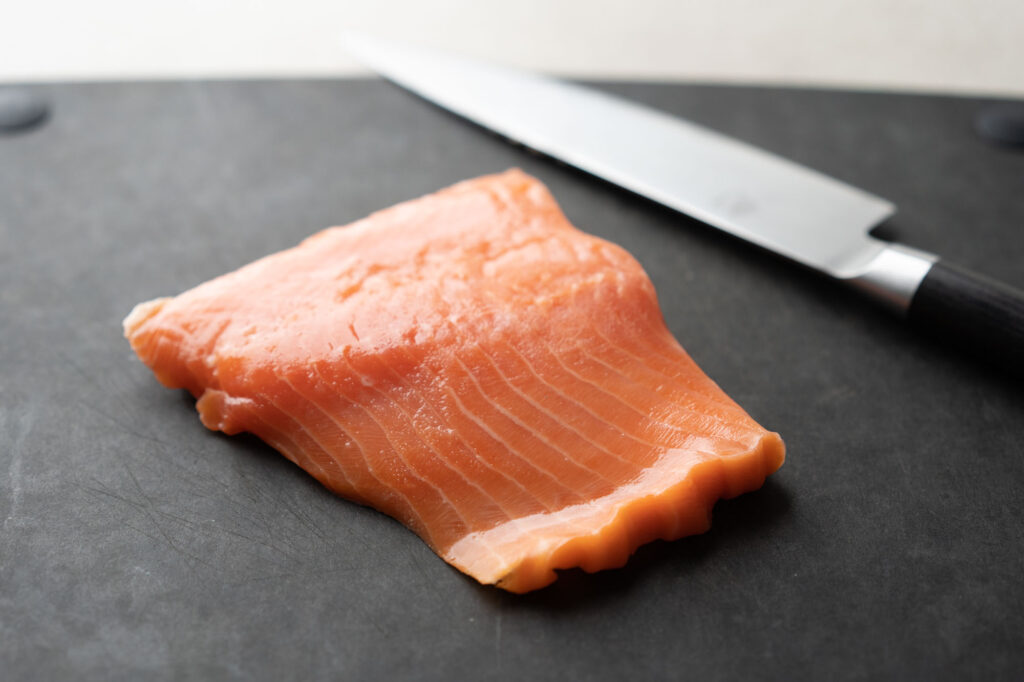
Salmon is rich in omega-3 fatty acid and one serving has over the recommended daily value of B12 (which helps brain and nerve cells function). It’s also a great source of protein!
One serving (4 ounces) of farm raised salmon has about 205 calories, 22 grams of protein, and 12 grams of fat. A serving of wild caught salmon contains about 160 calories, 22 grams of protein, and 7 grams of fat.
With all the nutritional value, and salmon’s hefty price tag, you want to make sure you cook your salmon before it goes bad.
So how do you know if salmon is bad? There are a few key indicators including smell, color, and texture.
Table of Contents
- How to Tell if Raw Salmon is Bad
- How Long Does Salmon Last
- How to Tell if Cooked Salmon is Bad
- How to Freeze Salmon
- How to Defrost Salmon
How to Tell if Raw Salmon is Bad
It Smells Fishy
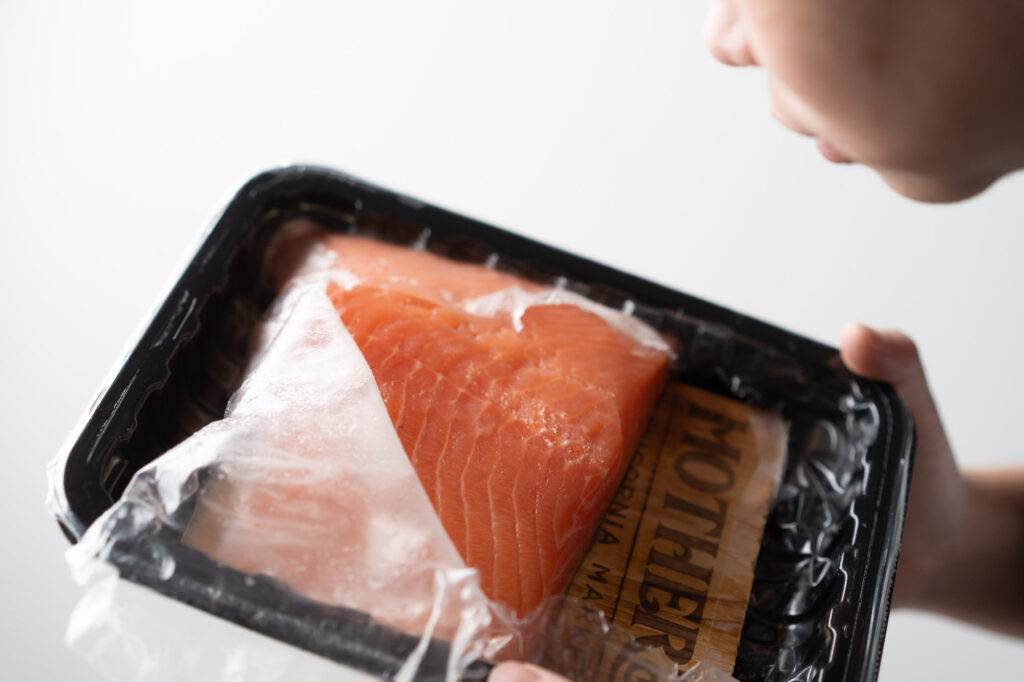
Salmon should have a mild odor, but the fishy smell shouldn’t be pungent. If your filet smells extremely fishy, rancid, or like ammonia, it’s probably bad.
Its Color is Muted
A fresh piece of salmon is a vibrant pink-orange color with white stripes of fat. When choosing your salmon, make sure it’s brightly colored. A dull color or gray tinge is a sign it’s bad or about to go bad. Be wary of suspicious discoloration.
It’s Mushy or Slimy
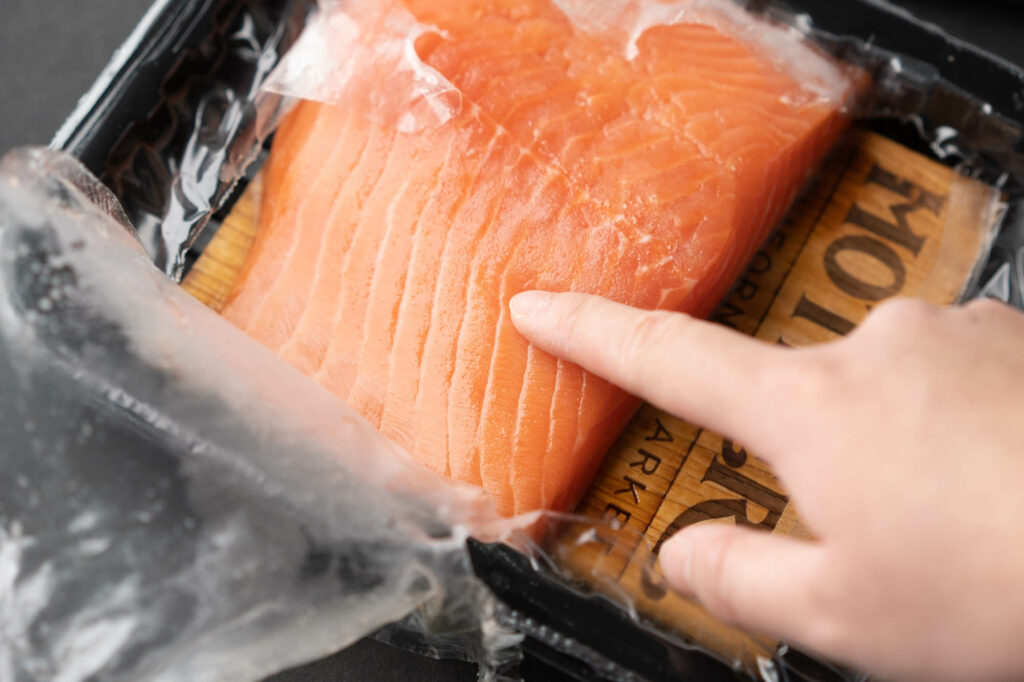
Salmon should be firm to the touch and bounce back if you press it lightly with your finger. If the salmon feels mushy, that’s a red flag. The surface should be moist, but not sticky or slimy. If you feel like you need to wash off a layer of slime, the salmon is bad.
It’s Moldy
Mold is an obvious sign that your salmon has gone bad. While foods with high moisture content can’t be salvaged if they’re moldy because they might be contaminated below the surface, according to the USDA, hard or firm foods like firm fruit or hard cheese can be used if you cut off 1 inch around and below the moldy spot.
Its Eyes Are Cloudy
While it’s more common to buy a salmon filet, if you’re purchasing a whole fish make sure its eyes are clear and shiny, the scales are bright and metallic, and the gills are reddish. Cloudy, sunken eyes or dull scales and gills mean that the fish isn’t fresh.
It’s Expired
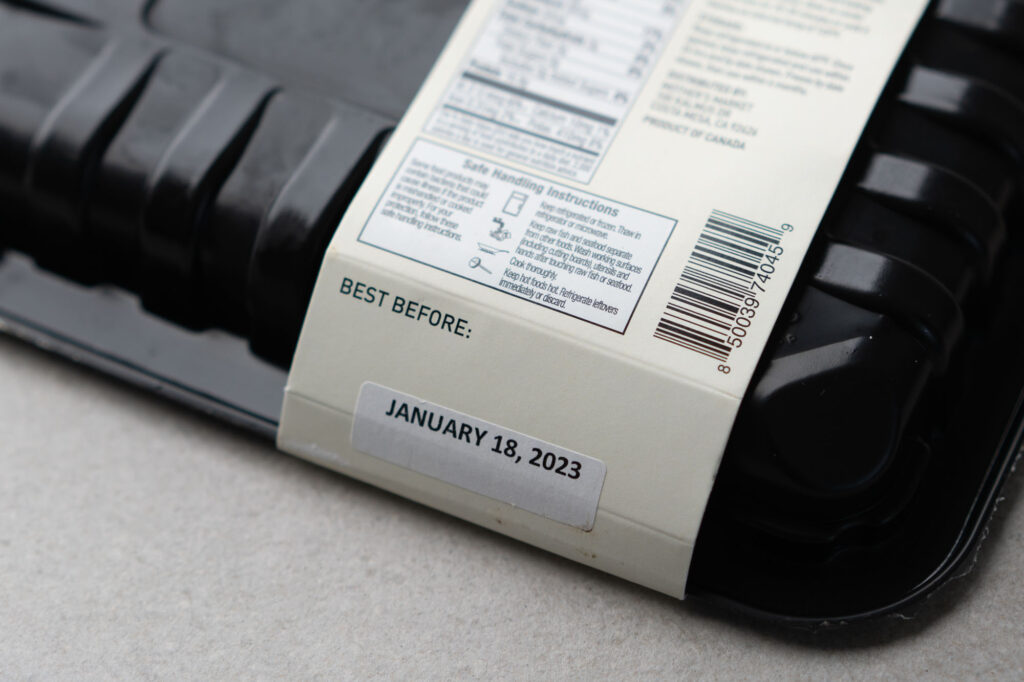
If your salmon is past the “best by” date, take caution. It still may be safe to eat, but you should check it for the signs of spoilage listed above. The USDA claims that best by dates aren’t an indicator of the product’s safety and, interestingly, they’re not required by Federal Law. Rather, they’re rough guidelines determined by the time and temperature the food is held at during distribution and sale, the packaging, and the characteristics of the food.
How Long Does Salmon Last
It should take about a week or less from the time you purchase salmon to the time you consume it. When you bring the salmon home from the store, make sure you refrigerate it right away. It shouldn’t be left out for more than 2 hours.
While frozen salmon can be used indefinitely, the flavor and texture becomes less appealing over time, so stick to the guidelines below.
| Refrigerated | Frozen | |
| Raw Salmon | 1-2 days | Up to 8 months |
| Cooked Salmon | 3-4 days | Up to 3 months |
You should cook defrosted salmon within 1-2 days.
How to Tell if Cooked Salmon is Bad
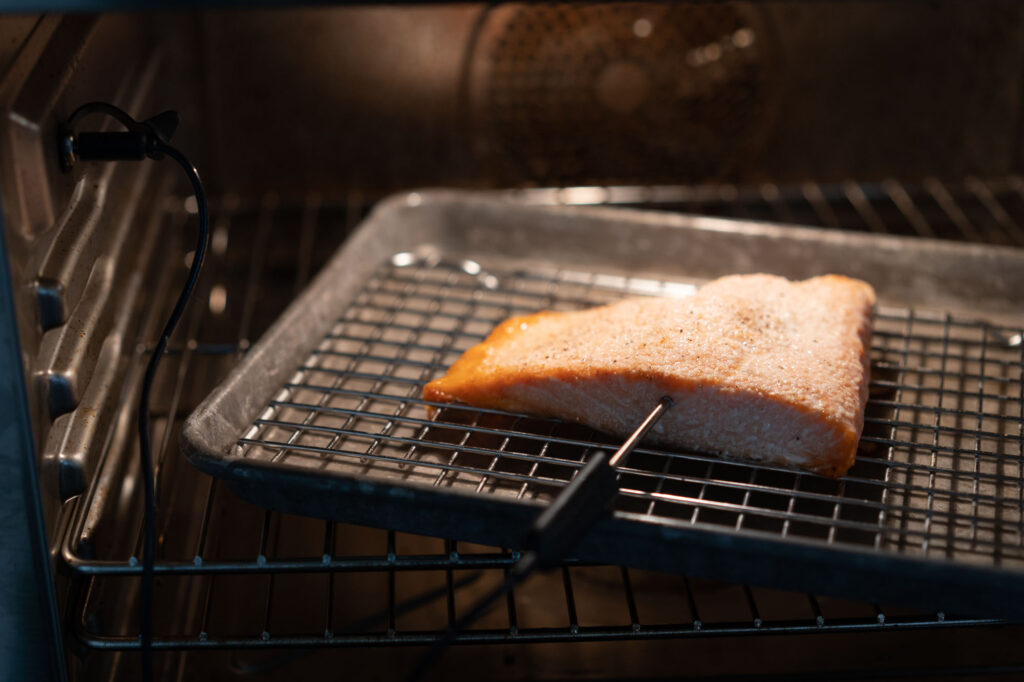
Cooked salmon that’s gone bad has many similar signs to raw salmon that’s gone bad. Telltale indicators that cooked salmon is bad include:
- It loses its flaky texture: Freshly cooked salmon is flakey when you dig your fork into it. If the filet is hard or sticks together, it may be too old.
- It smells fishy: Cooked salmon should have a subtle smell. If the “fishy” smell is pungent, it’s gone bad or on the verge of going bad.
- It’s dull: Like raw salmon, cooked salmon should have a vibrant pink color. If it starts turning gray, the salmon is bad.
- It’s slimy: Cooked salmon may feel slightly moist to the touch, but if it’s slimy, it’s no good.
What Does Bad Salmon Taste Like?
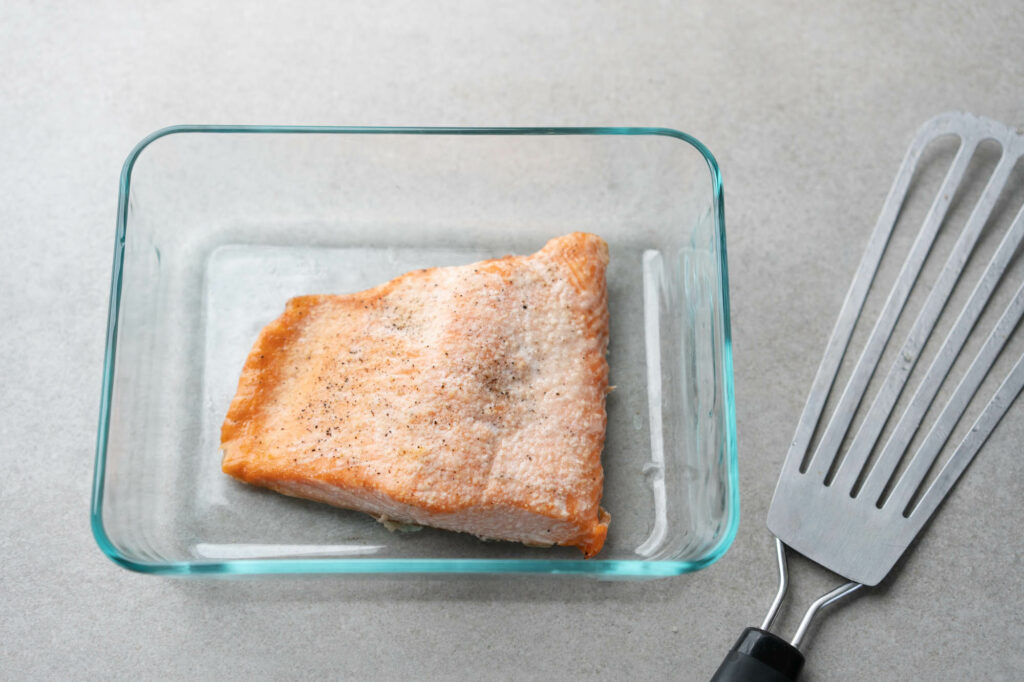
Cooked salmon should have a subtle, creamy flavor. If it’s bad, or on the verge of going bad, it will be extremely fishy and even slightly sour.
Use all your senses when examining the viability of salmon and if in doubt, throw it out.
How to Freeze Salmon
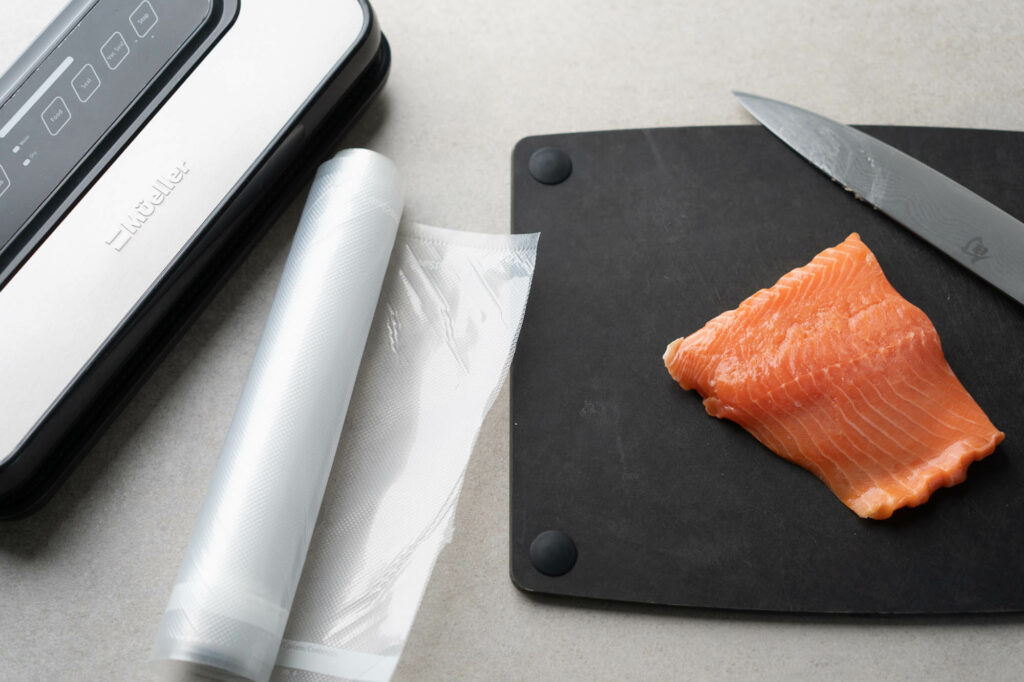
If you’ve purchased fresh salmon and know you won’t cook it within 1-2 days, you may want to freeze it. Similarly, if you know you can’t eat all your cooked salmon before it goes bad, you can freeze it.
Before you freeze it, check for any signs that the salmon has gone bad. If it still looks healthy:
- Pat the salmon dry.
- Tightly wrap individual portions in plastic wrap. This keeps the salmon filets from sticking together and helps you defrost the desired amount of salmon later.
- Place the salmon in a freezer-safe, airtight bag. Squeeze out all the air to minimize the risk of freezer burn.
- Label the bag with the date. Remember, for best results, frozen cooked salmon should be consumed within 3 months and frozen raw salmon should be consumed within 8 months.
If you’ve left salmon in the freezer for too long, it may look discolored or freezer burned. While it’s likely still safe to eat, its taste or texture may be compromised.
How to Defrost Salmon
There are two ways I defrost salmon, depending on how quickly I need it.
1-2 hours in cold water
Place your salmon in a bowl with cold water. This helps keep it at a safe temperature and reduces the risk of bacteria growth. Check on the salmon every thirty minutes and change the water if needed. Depending on the size of your salmon, it will take 1-2 hours to defrost.
24 hours in the refrigerator
If you don’t plan on cooking your salmon right away, simply move it from the freezer to the refrigerator. It should defrost naturally and be ready to cook in 24 hours.
If you love seafood, you should check out our blackened fish and Sriracha shrimp recipes.
You must be logged in to post a comment.